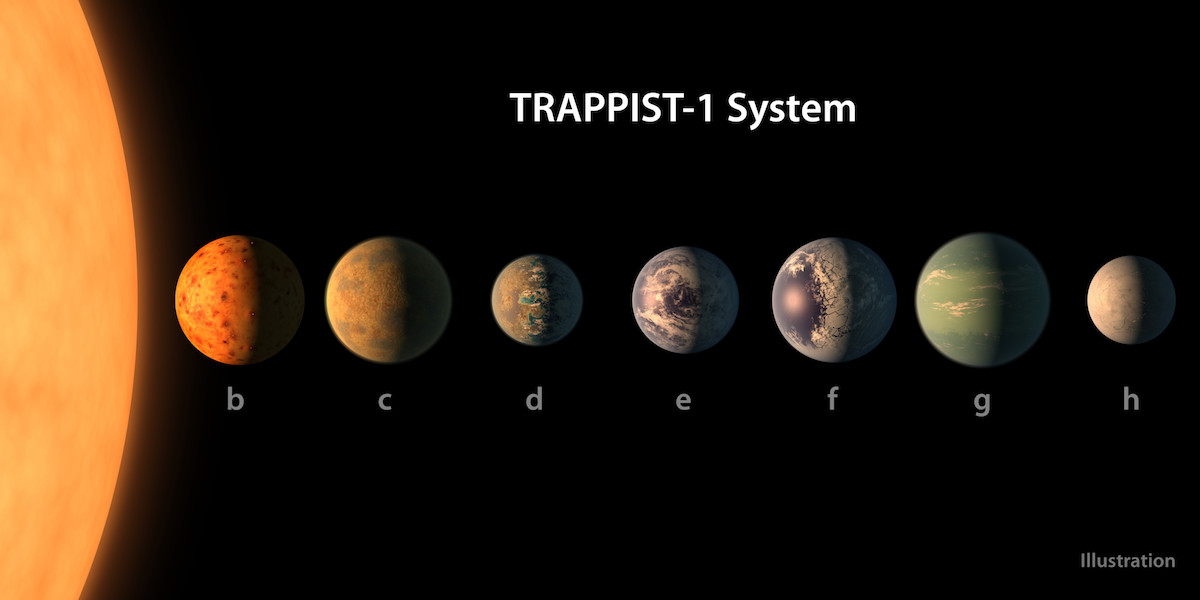Drake & Trappist-1
NASA's latest announcement is important because of Drake.

Wait, not that Drake... this one, Dr Frank Drake:

He's most famous for the Drake Equation, which provides a method for estimating the number of active, intelligent and communicating civilisations in the Milky Way Galaxy - i.e. it tells you how many aliens are out there.
TRAPPIST-1

This planetary system recently discovered has 7 Earth-sized planets orbiting a single star! Three of those planets are orbiting within the habitable zone - the "goldilocks area", where conditions are just-right to support life. Strangely enough, all these planets are orbiting closer to their star than Mercury is to our own sun. Trappist-1 is an ultra-cool dwarf star. Consequently the planets can be much closer to their star and still may contain liquid water, crucial for life as we know it.
In the next few years, several space telescopes will observe the system, looking for clues to the development of extra-terrestrial life. Most exciting: the James-Webb Space Telescope scheduled to launch in 2018.
Spitzer, Hubble, and Kepler will help astronomers plan for follow-up studies using NASA's upcoming James Webb Space Telescope, launching in 2018. With much greater sensitivity, Webb will be able to detect the chemical fingerprints of water, methane, oxygen, ozone, and other components of a planet's atmosphere. Webb also will analyze planets' temperatures and surface pressures – key factors in assessing their habitability.
What the Trappist-1 discovery implies is that the average rate of Earth-like planets-per-star may be much higher than we previously thought (the third factor in the Drake equation: ne). There's a lot of alien worlds out there.
TL;DR Drake and NASA teamed up to find aliens

